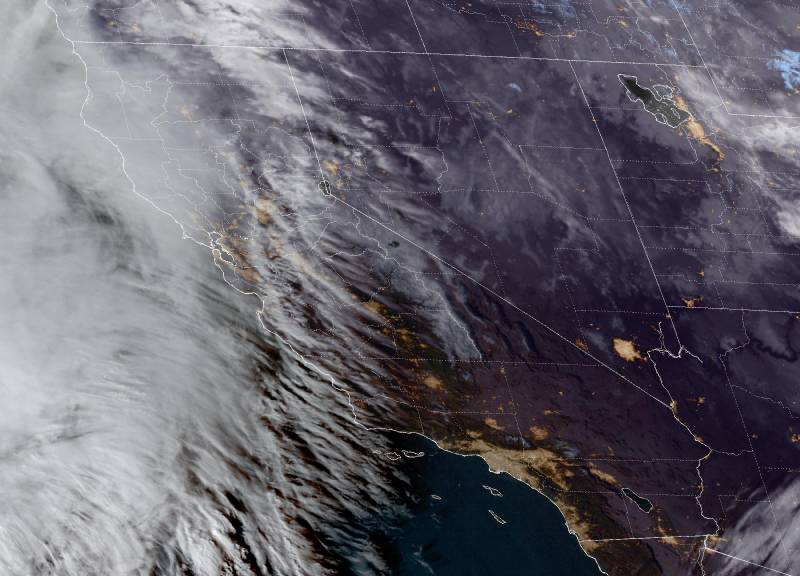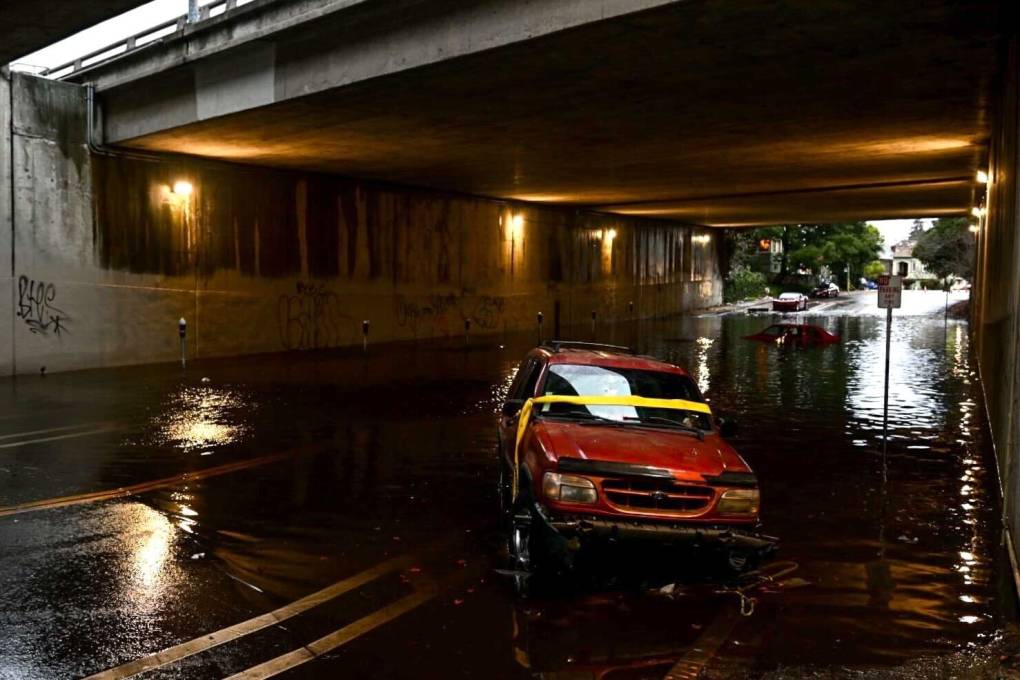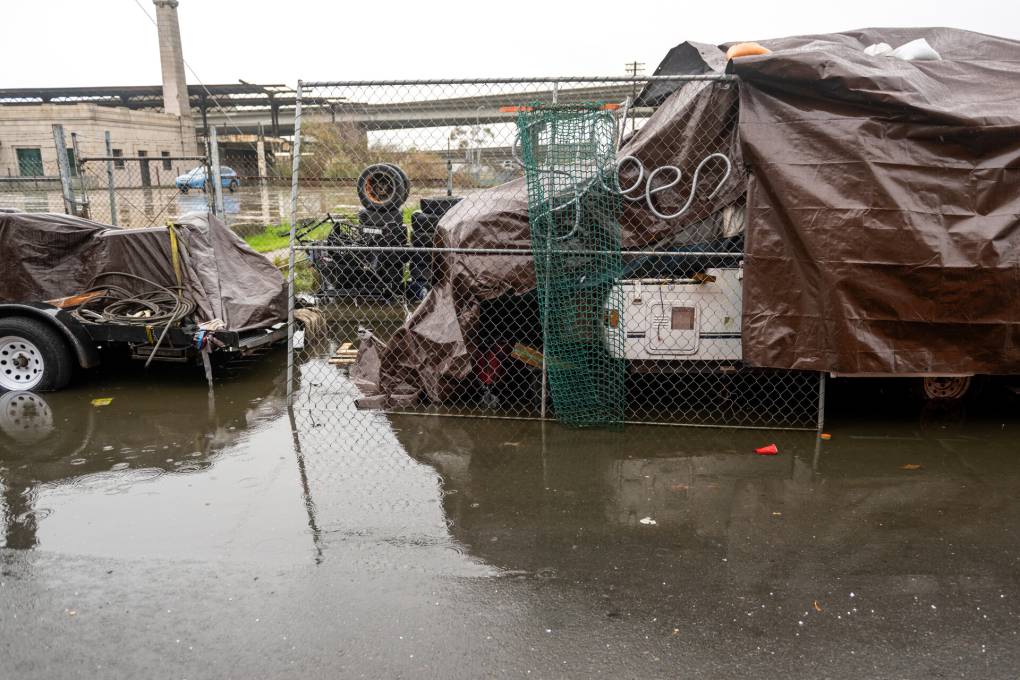California weather calmed Friday but the lull was expected to be brief as more Pacific storms lined up to blast into the state, where successive powerful weather systems have knocked out power to thousands, battered the coastline, flooded streets, toppled trees and caused at least six deaths.
Remnant showers from the latest storm, a “bomb cyclone,” fell around the state and dangerous surf pounded the coast despite declining wave heights, while some areas enjoyed sunshine. A Southern California pier was damaged by high surf and winds overnight and will remain closed until it is repaired, officials said. Streets flooded in low-lying beach cities.



